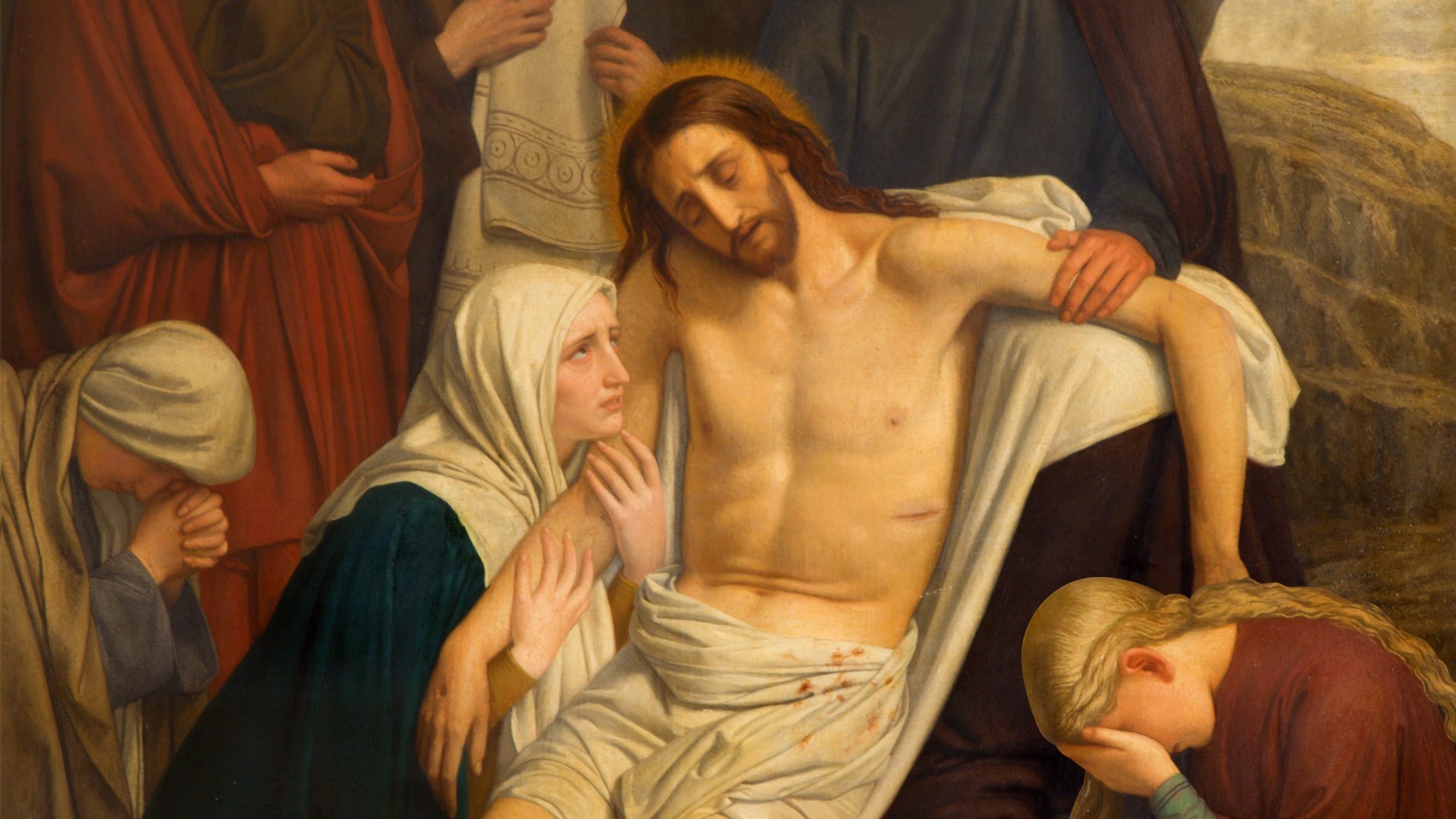The most striking of my childhood church memories occurred during our parish’s Good Friday service each year. At the end of the service, with the lights dimmed, our pastor would draw a black drape across the altar at the front of the sanctuary. As a child, the gesture reminded me of physicians I’d seen in old Hollywood movies draping the deceased. No doubt the allusion was intended. A black cloth hung on the cross above the altar, the sanctuary dressed for a funeral.
Afterward, my family and I walked quietly to the parking lot. An awkward hush followed us. Jesus had just died in there—what could you say after that? Buckled into the back seat of our station wagon, my sisters and I sat uncomfortably, waiting for the feeling to subside. This was only a pageant, right? The world wasn’t really this dark, our situation this bleak.
Eventually, conversation began to flow, and by the time we arrived home, the transition from Good Friday was complete. Like slowly waking from a bad dream, we emerged into the present once again. The next day, Holy Saturday, was filled with busyness. We made deviled eggs and rearranged the fridge to fit the ham. Nobody spoke of death or dying or thought about the black drape across the altar.
When we arrived at church on Easter morning, I always marveled at the transformed sights and smells of the sanctuary. Fragrant lilies and hyacinths blanketed the chancel, and the altar was covered in a white-and-gold embroidered cloth. The sanctuary had been scrubbed clean of death.
Even then as a child, the contrast seemed surreal. Were we the same people we’d been just two days before? After 40 days in Lent with Jesus, we stood at the foot of the cross and took in its horror, woke on Saturday to make deviled eggs and fruit salads, and then arrived at church on Sunday for celebration. My heart couldn’t make the jump.
It wasn’t until adulthood—and now in widowhood—that I realized why the transition from Good Friday to Easter Sunday felt so abrupt. In all of our careful reenactment, we had forgotten the most human part of the process: the mourning.
By contrast, the early church brought mourning into its Holy Saturday practices. From the second century on, Christians fasted and prayed between Good Friday’s dusk and Easter’s dawn. Inspired by the Gospel narratives, early believers committed those 40 hours to mourning the crucified, dead, and buried Jesus.
Like loved ones attending a wake, they stopped for the day and kept vigil. They mourned their own sinfulness and the world's brokenness. They wept over the dead body of their Lord, knowing that mourning it was indispensable for the journey to Easter joy. And they named the day Holy Saturday because they knew that death, too, is sacred.
In fact, new believers were baptized on this day. Their baptisms were meant in part to underscore Paul’s declaration that “we always carry around in our body the death of Jesus, so that the life of Jesus may also be revealed in our body” (2 Cor. 4:10).
This year, COVID-19 has created a drastically different context for Easter. This crisis allows none of us to sidestep conversations around grief and death. The pandemic itself feels like one long Holy Saturday, where we live in the liminal space between death and the life we hope for on the other side. We’re left asking questions like those I had growing up: How do we worship while holding grief and joy in the same hand? Can we manage these mixed emotions? How do we come to Easter in the midst of death?
Since my husband’s death last summer, death is no longer abstract. I have wondered nervously if I can be ready for Easter Sunday in time. The span from Good Friday to resurrection morning is so short. But Holy Saturday helps me. It helps all who now mourn like I do—those who tremble in their weeping; those whose hearts have been pierced by death; those who know the unbearable tension between the now and the not yet; those who will find consolation only in vigil with the buried Jesus; and those who aren’t yet ready to sing “Alleluia.”
And yet, it is from the grave that resurrection happened. Year in and year out, in sickness and in health, come rain or shine, we celebrate Christ’s return from the dead. Every Easter, a song emerges not in spite of our sorrow but because of it. Passion gives way to praise.
“The celebration of Easter tells us what lies on the other side of COVID-19 and on the other side of all our trials: life with God,” writes Esau McCaulley, assistant professor of New Testament at Wheaton College. “This message is necessary not because we are stumbling toward Easter Sunday as a scattered and beleaguered people of God. It is necessary because the truth of the gospel shines most brightly in dark times.”
This Easter Sunday, then, we will stubbornly insist that “He is risen indeed” is our honest and true expression of worship. God’s resurrection power will dispel our darkness, not fully now, but surely on that great day for which our grieving hearts await.
Clarissa Moll (MA, Trinity Evangelical Divinity School) is the young widow of author Rob Moll and the mother of their four children. After a career in fundraising and marketing for small nonprofits, she now supports those in grief through her writing. Find her on Instagram and Twitter.









